Actually, Lockheed X-32 ASTOVL / JAST Large Scale Powered Model (LSPM) per InvisibleDefender.
Source:
http://www.globalsecurity.org/military/systems/aircraft/x-32-pics.htm
Triton said:Lockheed artist's concept from Global Security grouped with Boeing X-32 pictures. Profile view of Common Affordable Lightweight Fighter (CALF)?
Source:
http://www.globalsecurity.org/military/systems/aircraft/x-32-pics.htm
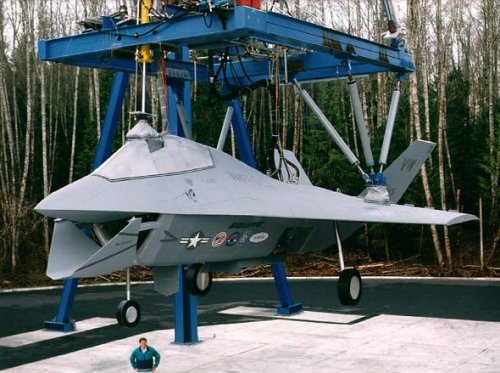
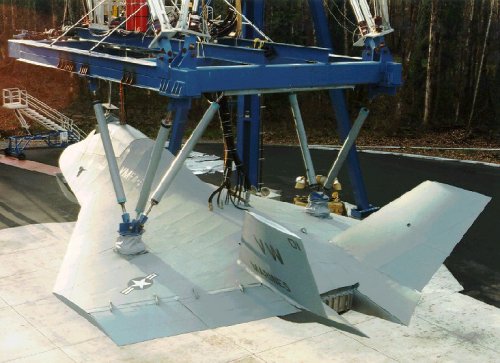
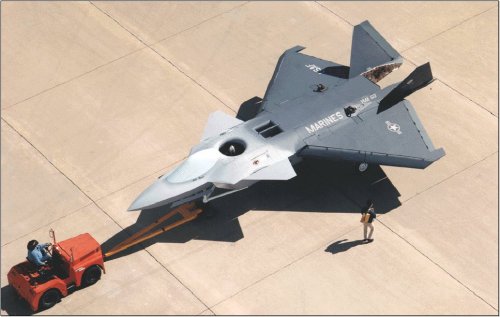
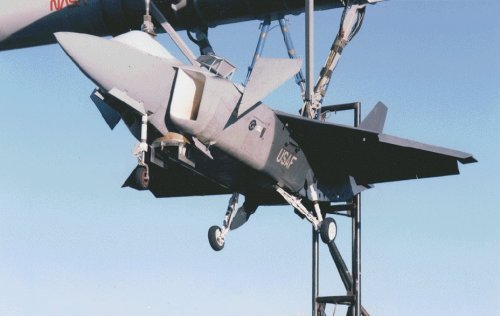
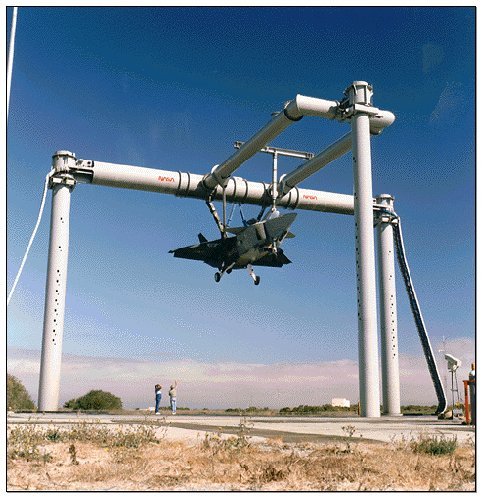
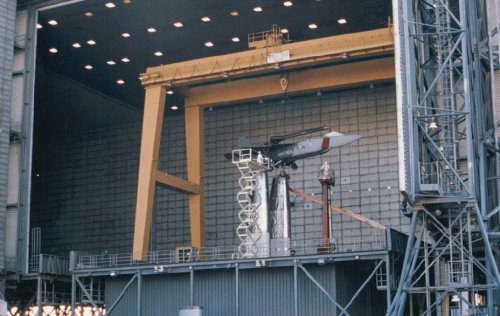
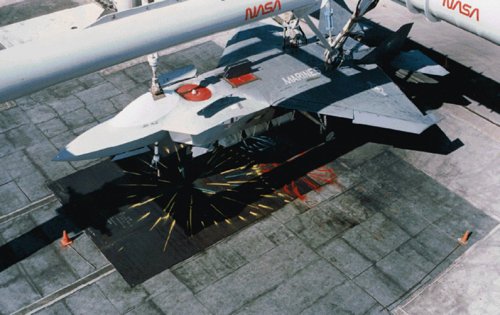
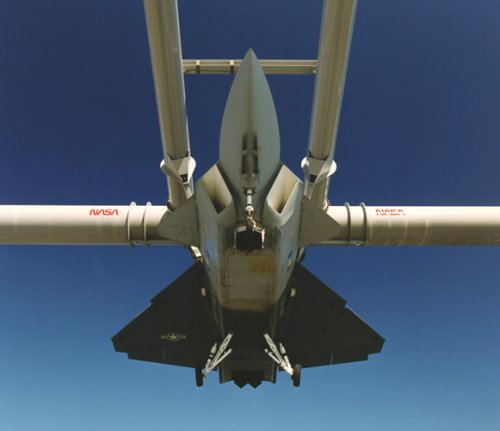
Stargazer2006 said:Wow, great! Can't wait for the whole story of the ASTOVL X-32/X-35 program's inception to be told!
In this cooperative program between NASA, Lockheed Corporation, and the Advanced Research and Projects Agency (ARPA), an advanced short takeoff and vertical landing (ASTOVL) model was tested in the 9- by 15-Foot Low-Speed Wind Tunnel at the NASA Lewis Research Center. The 10-percent scaled model was tested over a range of headwind velocities from 25 to 120 kn. This inlet/forebody test was a key part of an important Department of Defense program investigation enabling technologies for future high-performance ASTOVL aircraft.
The Lockheed concept is focused on a shaft-coupled lift fan system centered around Pratt & Whitney's F119 power plant. As envisioned, a conventional takeoff and landing version (CTOL) would replace the U.S. Air Force's F-16's. The ASTOVL version would eventually replace Marine and, possibly, British Harrier aircraft. The ASTOVL and CTOL versions are scheduled to begin their manufacturing development phases in 2000.
The purpose of this test was to acquire data pertinent to the inlet-forebody model. The test was very successful. Both steady-state and dynamic data were obtained. This small-scale testing, which is directed at reducing risks, may greatly reduce the risks on a full-scale aircraft.
LowObservable said:Interesting paper, Ian.
Just a thought - you make the point that the Marine requirement was "a driving design consideration", but it might be worth adding that it imposed tough dimensional limits.
The first Joint Strike Fighter aircraft are currently scheduled for delivery to the services in 2008.
No comment....
yeshole in the ground said:isnt that usually where a wind tunnel model is mounted?
Colonial-Marine said:Are there any diagrams of the lift system on the Lockheed X-32 ASTOVL/JAST large scale powered
model? Was it a 2D thrust vectoring nozzle that could swivel downwards or was another method used?
Sundog said:Do you mean the Boeing X-32? The Boeing X-32 used two nozzles at the CG for STOVL. or do you mean the early Lockheed X-35 canard design that was tested as a large model?
Rafael said:Along the lines of "Google is your friend", wich it is not, I searched for SSF, "Stealth Strike Fighter", "ASTOVL", "JAST", "CALF", all accompanied
with variations of "Lockheed" or "McDD", and turned up with no 3-Views of Lockheed's same.
Source: http://www.aerospaceweb.org/aircraft/fighter/jsf/pics05.shtmlEvolution of the Lockheed Martin design for JAST culminating in the X-35
Image courtesy JSF Program Office, 2010
fightingirish said:Source: http://www.aerospaceweb.org/aircraft/fighter/jsf/pics05.shtmlEvolution of the Lockheed Martin design for JAST culminating in the X-35
Image courtesy JSF Program Office, 2010
LowObservable said:This is my understanding:
The LockMart design went from canard to quad-tail shortly before the CDA RFP deadline (which was in 1996). The main reason was that the carrier version was going to need a larger wing than the span-restricted (LH-class parking) CV/STOVL aircraft, and larger control surfaces. Scaling up a delta wing, while keeping its sweep angles constant (LO constraint) is difficult configuration-wise because the increase in root chord - in feet and inches - gets very large... so where do you put the (also larger) canard? A wing with less sweep and taper, and an aft tail likewise, made it easier to accommodate two wing designs on the same body shape.
The LSPM (large scale powered model) in the Google Earth photos was built as a canard, but I suspect that they modded it to get some idea of the difference in suck-down effects.
PaulMM (Overscan) said:Out of interest - two more drawings of the "Ghosthawk" design from Paul Bevilaqua's presentation. Looks pretty much the same as the Lockheed CALF
flateric said:grab it while it's there
Inventing the Joint Strike Fighter
Dr. Paul Bevilaqua, Lockheed Martin Skunk Works
http://www.nps.edu/Academics/Institutes/Meyer/docs/Joint%20strike%20fighter.pdf
Source: http://www.codeonemagazine.com/article.html?item_id=137The results of that study showed that the 3BSD design was significantly lighter than the SERN nozzle. Moreover, the design also showed superior propulsion performance in all modes. The 3BSD was subsequently included in the ASTOVL Configuration 141 – the original canard delta design of what evolved into the X-35.
